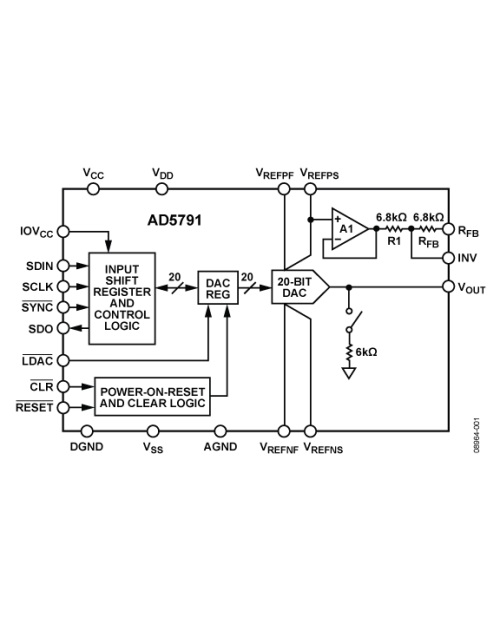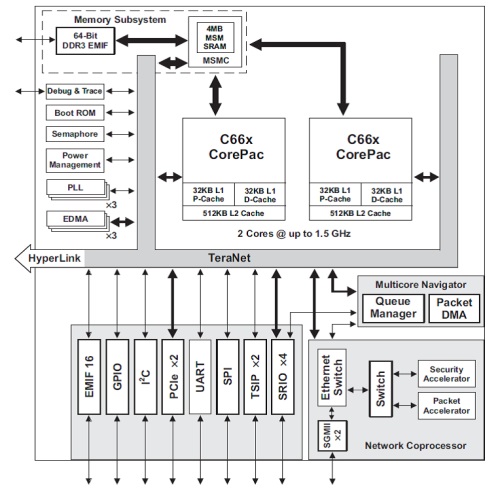BY MURRAY SLOVICK
As noted on the opposite page, magnetic resonance imaging (MRI) is a non-invasive diagnostic technology for taking very clear and detailed pictures of tissues and internal organs using high-frequency radio waves delivered in pulses and a strong magnetic field. The magnetic field forces hydrogen atoms in the body into a particular alignment (resonance). Radio frequency energy is then distributed over the patient, which is disrupted by body tissue. The disruptions correspond to varying return signals that, when processed, create the image. In this article we'll look at the role played by three product types used in the signal path whose accurate processing of MRI signals is essential to obtaining high-quality images: DACs, DSPs, and power amplifiers.
Given adequate support circuitry, component selection and proper layout, higher DAC precision produces sharper MRI image resolution. For controlling the magnetic and RF energy in an MRI, high-resolution, high-speed DACs are needed. High resolution is required to accurately define the area of the patient to be scanned. High-speed is necessary for MRI applications where the signals for the predominant 1.5- and 3-Tesla systems are approximately 64 and 128 MHz.
Fortunately, advances in semiconductor processing, DAC architecture, and fast on-chip calibration techniques make possible highly linear, stable, fast-settling DACs which provide controllable precision voltages. The Analog Devices AD5791 (Fig. 1), for example, is a single, 20-bit, serial input, 1-ppm-accurate voltage output DAC that operates from a bipolar supply of up to 33 V. Besides its impressive linearity, the AD5791 combines a low 0.05-ppm/°C temperature drift, 1-μs settling time, 0.6-μVp-p noise in the 0.1 to 10-Hz frequency band and better than 1-ppm long-term stability. Analog Devices also offers its EVAL-AD5791, a full-featured evaluation board designed to allow the user to easily evaluate all features of the AD5791 voltage-output 20-bit DAC.

Fig. 1: Analog Devices' AD5791 20-bit DAC.
Accurate signal processing is essential to obtaining high-quality MRI images. DSPs can be used to properly control the magnets in the MRI system. A DSP can also take care of preprocessing the signal before it reaches the image reconstruction engine. The TI TMS320C6672 DSP (Fig. 2) is the highest-performance fixed/floating-point DSP based on TI's KeyStone multicore architecture. Incorporating the C66x DSP core, this device can run at a core speed of up to 1.5 GHz. TI's TMS320C6672 DSP combines fixed- and floating-point performance, an increased number of peripherals and memory per core, offers 3-GHz cumulative DSP and is fully backward compatible with TI's existing C6000 family of DSPs. The C6672 device has a complete set of development tools, which include an enhanced C compiler, an assembly optimizer to simplify programming and scheduling, and a Windows debugger interface for visibility into source-code execution.

Fig. 2: Functional diagram of TI TMS320C6672.
Radio frequency power amplifiers (RFPAs) for MRI are designed to take a relatively weak RF signal and boost it up to a stronger RF signal. How well this is done can have a direct impact on signal-to-noise ratio (SNR) and other parameters that can become clearly visible in MRI scans. (For example, failure to achieve the desired noise levels can lead to “ghosting” artifacts in the image.) Based on the STMicroelectronics STAC4932B RF power transistors, the company's STEVAL-IMR002V1 demonstration board helps designers implement a 2-kW 100-V 123-MHz Class AB peak power amplifier (PPA) for 3-Tesla MRI applications. It uses double push-pull bolt-down devices, two STAC4932B N-channel MOSFETs and can exceed 2,000 W at 123 MHz with large signal gain of 19 dB in Class AB and a drain efficiency of 60%.
With Mouser expanding its Medical Applications website, engineers will find a new MRI section with application notes and other resources listed by supplier to bring them up to date on the newest technology and design developments. An interactive block diagram is used for easy navigation to a broad selection of products, organized by product category.
Advertisement
Learn more about Mouser Electronics





